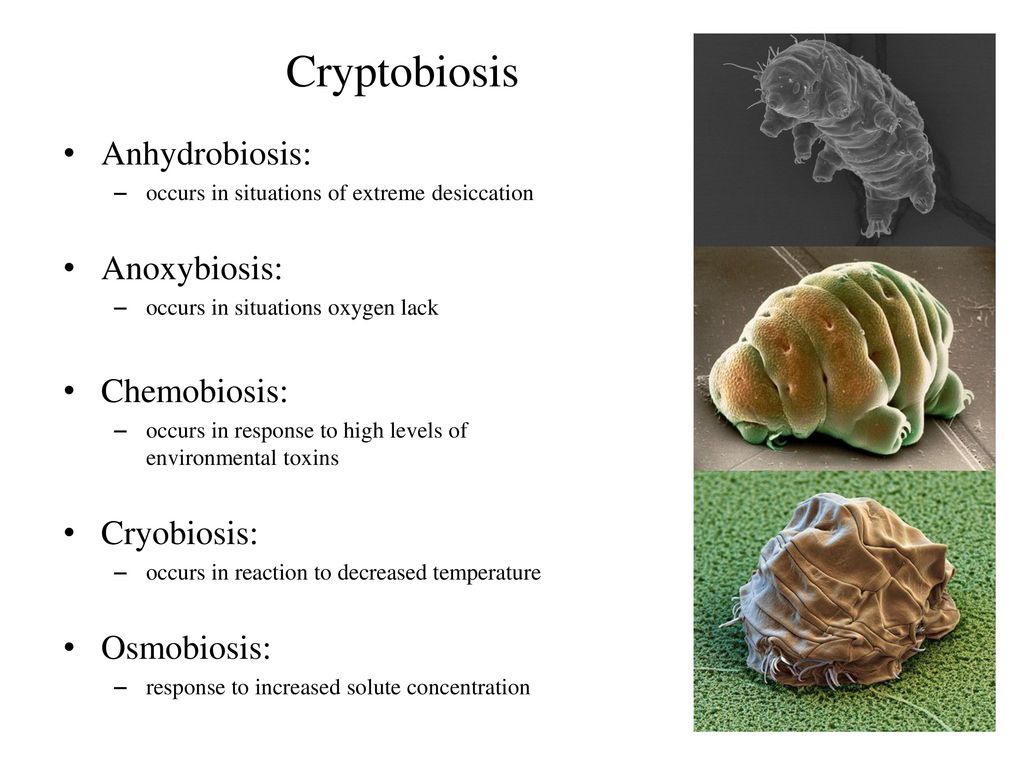CRYPTOBIOSIS
- Cryptobiosis is a state of extreme inactivity in response to adverse environmental conditions. In the cryptobiotic state, all metabolic processes stop, preventing reproduction, development, and repair.
- In cryptobiosis, an organism can live almost indefinitely while it waits for environmental conditions to become better
- Cryptobiosis is a biological state or condition in which an organism enters a state of suspended animation, where its metabolic processes almost completely halt, allowing it to withstand extreme environmental conditions that would otherwise be lethal.
- This term is commonly associated with certain microorganisms, invertebrates, and even some plant seeds that can survive in harsh environments, such as extreme temperatures, high radiation, desiccation (extreme dehydration), and lack of oxygen
- Many animals like nematodes, and more famously, tardigrades, can survive extreme conditions by entering a dormant state called “cryptobiosis.”
There are several types of cryptobiosis, the most common include:
- Anhydrobiosis (lack of water): This is the most common type of cryptobiosis. Organisms that can enter anhydrobiosis are able to survive by reducing their water content to very low levels. This is typically done by producing special proteins that help to protect the cells from damage. Examples of organisms that can enter anhydrobiosis include tardigrades, nematodes, and brine shrimp.
- Cryobiosis (low temperature): Some organisms are able to survive freezing temperatures by entering a state of cryptobiosis. In this state, the water in the cells of the organism is converted to ice, but the cells themselves do not freeze. This is because the organism produces special proteins that prevent the formation of large ice crystals, which can damage the cells. Examples of organisms that can enter cryobiosis include tardigrades, lobsters, and some insects.
- Osmobiosis (increased solute concentration): Some organisms are able to survive in environments with high solute concentrations, such as salt water. They do this by entering a state of cryptobiosis in which the cells of the organism are able to tolerate the high solute concentration. Examples of organisms that can enter osmobiosis include brine shrimp and some bacteria.
- Anoxibiosis: Some organisms can survive without oxygen for prolonged periods, like certain bacteria and rotifers.





